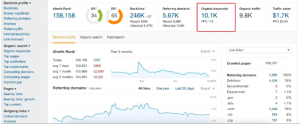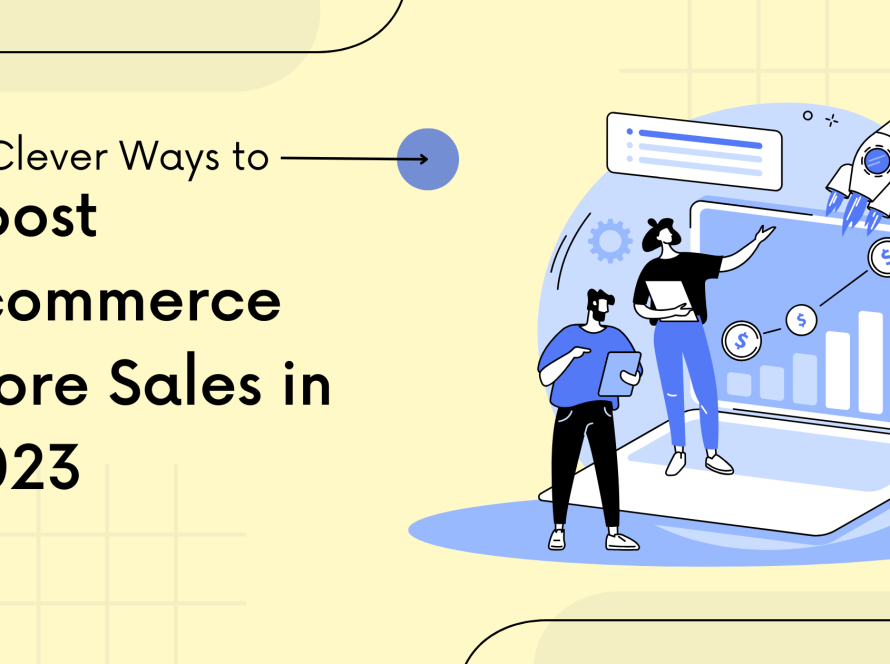Increasing website traffic is a key goal for any ecommerce venture. However, attracting visitors to your online store without hefty ad spending is achievable through effective ecommerce SEO. Ecommerce SEO involves optimizing your website according to search engine best practices and aligning your content with customer search queries.
For store owners, the advantages of SEO encompass heightened visitor numbers, enhanced brand visibility, and increased sales. Yet, staying abreast of search engine algorithm changes adds complexity to mastering the art of search optimization.
Begin your online selling journey on Shopify by clicking here.
This comprehensive guide delves into fundamental aspects of ecommerce SEO, offering insights on keyword research, website structuring, and crafting compelling content for product pages. Equip yourself with this SEO checklist to establish a strong foundation for ranking and enjoying the benefits of effective search engine optimization.
What is ecommerce SEO?
Ecommerce SEO constitutes the efforts undertaken to enhance the online visibility of a web store within search engine results pages (SERPs). The diverse tasks within ecommerce SEO marketing include crafting content that meets the criteria of keyword queries entered into search engines. For instance, a t-shirt-centric ecommerce store like True Classic can enhance its website SEO by developing content addressing topics such as “effective techniques for folding t-shirts without wrinkles.”
Additional activities in ecommerce SEO encompass optimizing page loading speeds, creating comprehensive product descriptions, and securing backlinks from reputable websites. Ecommerce platforms leverage SEO techniques to augment website traffic, attracting visitors who are actively searching for products and brands related to their offerings.
Ecommerce websites place importance on SEO
Upon entering a search query on Google, you are directed to a Search Engine Results Page (SERP), where you will encounter around 10 organic results.
These organic results appear below paid ads (orange) and Google Shopping ads (purple):
How to create an ecommerce SEO strategy
To develop an effective ecommerce SEO strategy and boost your store’s Google ranking, follow these six steps, especially if you’re new to search engine optimization. These steps offer practical insights for implementing fundamental ecommerce SEO practices on your website.
Navigate to a specific ecommerce SEO step:
- Conducting keyword research for ecommerce
- Structuring the site for ecommerce
- Implementing technical SEO
- Optimizing on-page content for ecommerce
- Incorporating blogging into your strategy
- Building quality backlinks
Step 1: Conducting Ecommerce Keyword Research
Initiating any ecommerce SEO strategy involves identifying high-value search terms used by potential customers. Ecommerce keyword research, which differs slightly from traditional keyword research, aims to target a mix of informational and commercial keywords, going beyond the usual focus on informational terms.
Keyword research tools
To conduct more sophisticated keyword research, utilizing a free SEO tool is essential, with Ahrefs being the most widely used.
These tools offer the capability to systematically research and analyze keywords in large quantities.
Suppose you compete with Amazon, an ecommerce store specializing in geeky t-shirts. Inputting its domain into a keyword research tool such as Ahrefs and selecting “Organic keywords” at the top provides valuable insights.
Choosing the right keywords for your store
Step 2. Structuring the site for ecommerce
In the realm of ecommerce SEO, the arrangement and structure of your site’s pages wield a significant impact on your search engine rankings.
The architecture of your site also plays a crucial role in enhancing user experience (UX). Navigating through your store’s content should be seamless for both visitors and search engine bots.
The complexity of site structure can increase as you continuously add and remove products and categories. Before advancing too far in your website development, it is imperative to ensure that:
- Your site structure is straightforward and adaptable to the growth of your store.
- Every page on your site can be accessed within a few, instinctive clicks.
Simplicity holds great value. The aim is to prevent visitors from resorting to the back button or getting lost in a maze while searching for their desired content. The goal is to avoid the need for constant reorganization and restructuring of your site every time a new product category is introduced.
Considering that a significant portion of SEO link authority resides on your homepage—often the most linked-to page by other businesses—product pages positioned farther from the homepage inherently possess less authority.
Page Indexing
During the implementation of SEO on your website, strategic decisions about the indexing and ranking of webpages become paramount.
In this context, “index” serves as an alternative term for the database utilized by search engines. Indexing a page entails adding it to this database, signifying that Google has acknowledged and included the page in its search results.
Another strategy is the use of canonicalization for pages. Canonicalizing a page involves informing Google that a specific URL serves as the primary or “master version” intended for display in search results. This proves beneficial in scenarios involving duplicate content. Without canonical tags, Google may:
1. Overlook unique content amidst duplicate material
2. Weaken your ranking potential
3. Select an incorrect master version on your behalf
Step 3. Implementing technical SEO
Technical SEO operates behind the scenes, focusing on optimizing your website for search engines without direct visibility to shoppers. It addresses factors like ideal site speed, mobile responsiveness, and efficient crawling. The benefits of technical SEO include:
- Enhanced website engagement due to fast and accessible site performance.
- Increased organic traffic is facilitated by improved crawlability.
Various methods to enhance technical SEO for ecommerce encompass:
- Establishing logical internal linking through your menus.
- Submitting your sitemap to Google Search Console.
- Optimizing images for quick loading.
Step 4. Optimizing on-page content for e-commerce
After completing keyword research and finalizing your site structure, the focus shifts to optimizing content on your two most valuable page types:
- Product category pages
- Product pages
Foundational aspects of ecommerce content are covered by default in Shopify, which includes automatic features such as:
- Inclusion of canonical tags.
- Generation of your website’s sitemap.xml and robots.txt files.
- Theme-generated title tags incorporating your store name.
- Themes are equipped with social media linking and sharing options.
However, certain features necessitate manual optimization:
- Edit title tags, meta tags, and meta descriptions to incorporate relevant keywords.
- Ensure accurate and descriptive alt text for product images.
- Incorporate keywords into file names.
- Thoughtfully structure URLs for blog posts, webpages, products, and collections.
When optimizing title tags and descriptions, keep in mind that these elements are directed toward Google. The primary objective is securing a prominent ranking on the first page, with the secondary goal of compelling searchers to click through to your site.
Step 5. Incorporating blogging into your strategy
Conclusion For Ecommerce SEO
Embarking on ecommerce SEO is the initial step in the process. The following guide provides essential insights to kickstart your journey, ensuring a solid foundation for optimizing your online store.
Key aspects include consistently creating original and comprehensive content, conducting regular site audits to address technical issues, exploring potential backlinking opportunities, and staying attentive to emerging keywords that align with your brand and product offerings.









